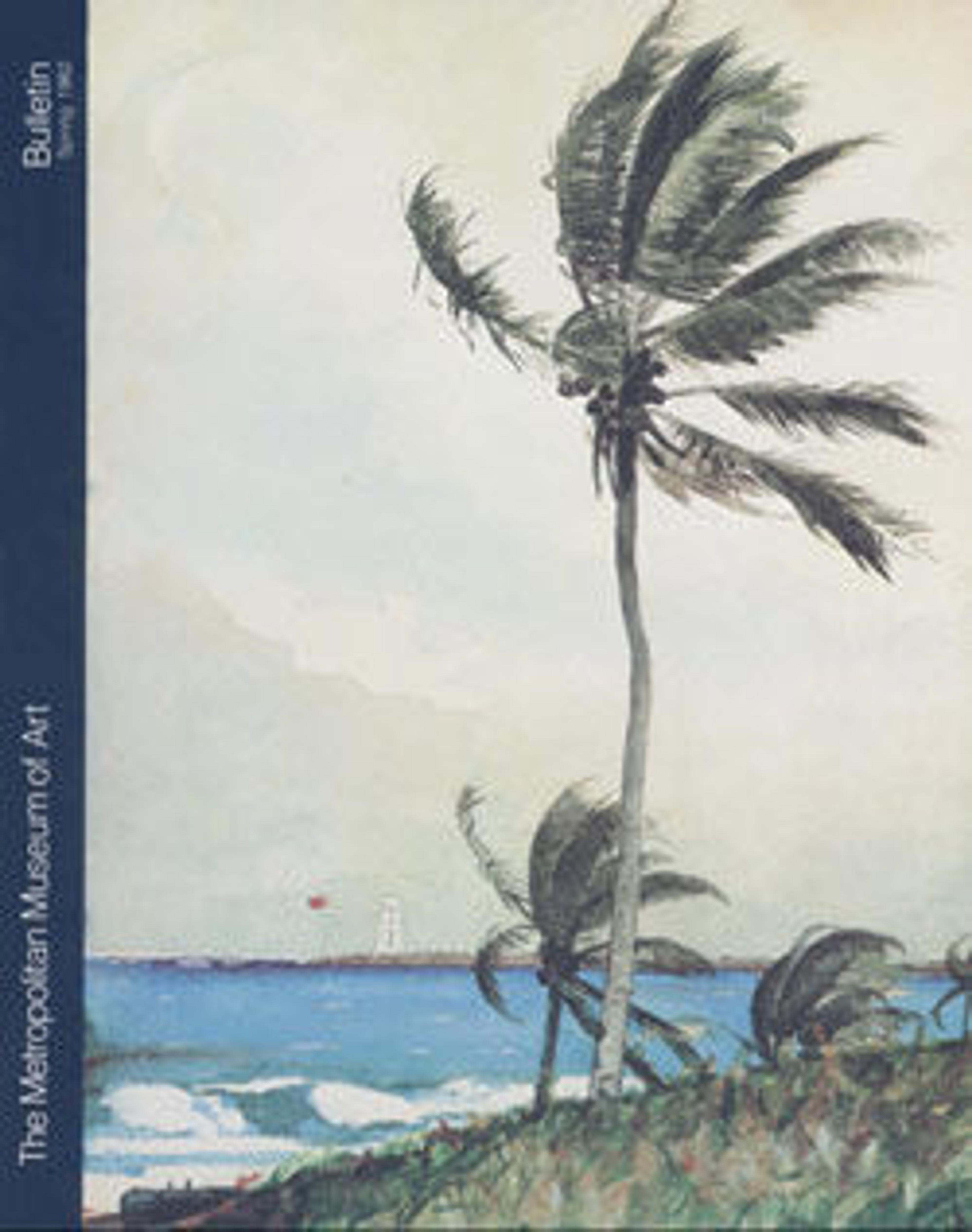The War for the Union, 1862 – A Bayonet Charge (from "Harper's Weekly," Vol. VII)
In the summer of 1862 the Army of the Potomac mounted an assault on Richmond, Virginia, but was repulsed. This dramatic composition, designed by Homer, an artist-correspondent for Harper’s Weekly, describes fighting at Fair Oaks—or Seven Pines—on May 31, when Union forces were saved by last-minute reinforcements. One of Homer’s most ambitious war subjects, the dramatic composition represents soldiers in close combat roused to a fever pitch. The accompanying text stressed:
Soldiers seldom actually cross bayonets with each other in battle. Before the regiment which is charging reaches its antagonist, the latter usually seeks safety in flight. All the strength and all the bravery in the world will not protect a man from being run through the body by a bayonet if he stands still while it approaches him. . . . At Fairoaks the rebels almost invariably broke and fled before our bayonets reached them. In one or two instances, however, there were hand-to-hand tussles. . . . One of them is realized in our picture.
Soldiers seldom actually cross bayonets with each other in battle. Before the regiment which is charging reaches its antagonist, the latter usually seeks safety in flight. All the strength and all the bravery in the world will not protect a man from being run through the body by a bayonet if he stands still while it approaches him. . . . At Fairoaks the rebels almost invariably broke and fled before our bayonets reached them. In one or two instances, however, there were hand-to-hand tussles. . . . One of them is realized in our picture.
Artwork Details
- Title:The War for the Union, 1862 – A Bayonet Charge (from "Harper's Weekly," Vol. VII)
- Artist:After Winslow Homer (American, Boston, Massachusetts 1836–1910 Prouts Neck, Maine)
- Publisher:Harper's Weekly (American, 1857–1916)
- Publisher:Harper & Brothers (American, New York)
- Date:July 12, 1862
- Medium:Wood engraving
- Dimensions:image: 13 5/8 x 20 5/8 in. (34.6 x 52.4 cm)
sheet: 16 1/16 x 22 5/8 in. (40.8 x 57.5 cm) - Classification:Prints
- Credit Line:Harris Brisbane Dick Fund, 1928
- Object Number:29.88.3(3)
- Curatorial Department: Drawings and Prints
More Artwork
Research Resources
The Met provides unparalleled resources for research and welcomes an international community of students and scholars. The Met's Open Access API is where creators and researchers can connect to the The Met collection. Open Access data and public domain images are available for unrestricted commercial and noncommercial use without permission or fee.
To request images under copyright and other restrictions, please use this Image Request form.
Feedback
We continue to research and examine historical and cultural context for objects in The Met collection. If you have comments or questions about this object record, please contact us using the form below. The Museum looks forward to receiving your comments.
